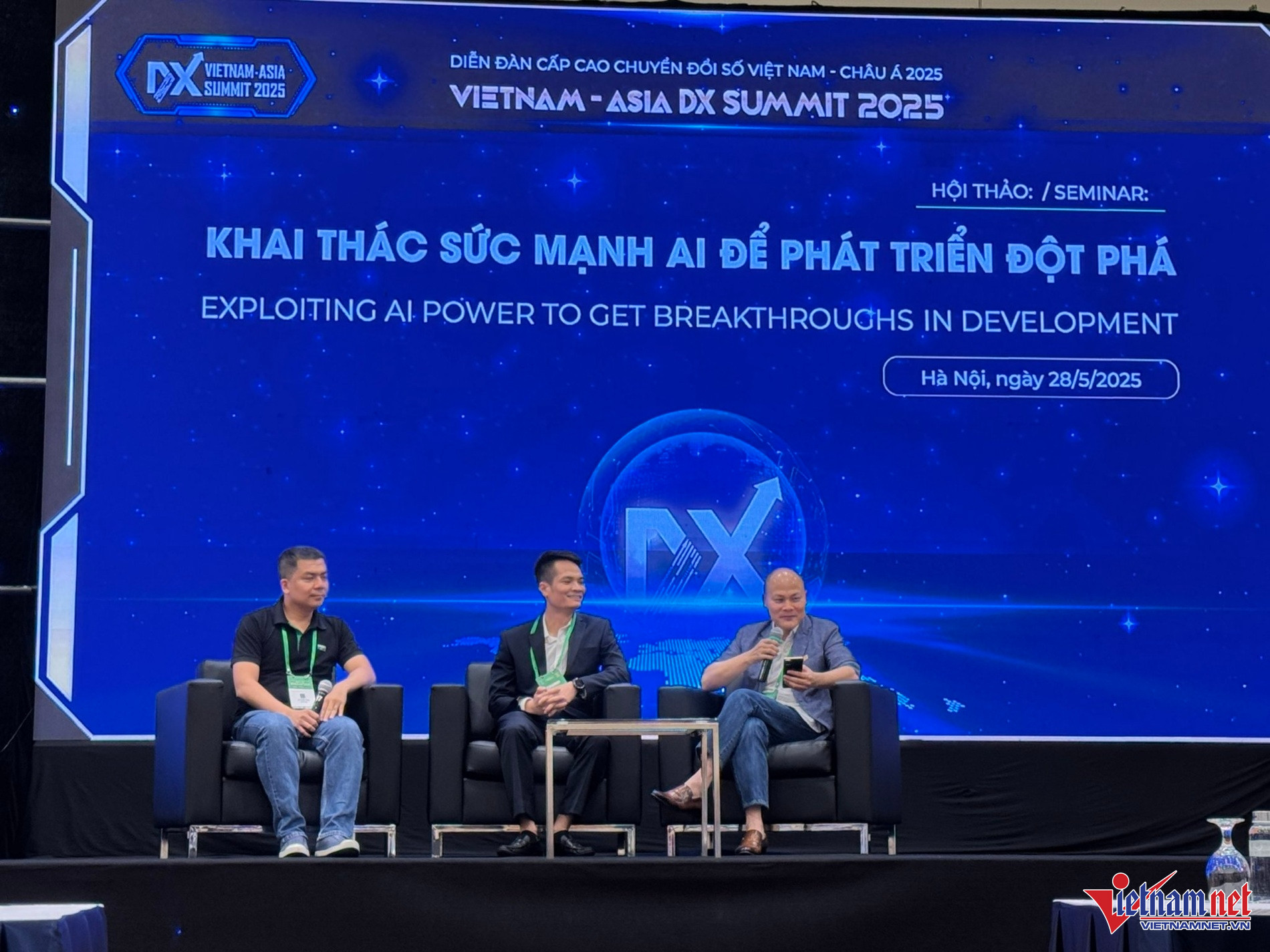In his opening speech, Nguyen Tu Quang praised Vietnamese expertise in artificial intelligence, especially in the field of generative AI (GenAI). He highlighted that two of the four foundational models behind ChatGPT had Vietnamese contributors: Dr. Le Minh Thang and Dr. Le Viet Quoc.
Dr. Le Minh Thang was also among the 50 core researchers of Google’s “100-day campaign” to develop Bard, the tech giant’s response to ChatGPT, launched in late 2022.
Quang further revealed that many overseas Vietnamese AI experts are eager to return home and contribute to Vietnam’s development.
‘Flipped classroom’ model piloted to train AI talent
One educational experiment currently underway involves a “flipped classroom” model, where students independently study AI and its tools at home and then present their understanding in class. Teachers assume the role of moderators, fostering critical thinking and self-learning.
Talent, however, is only one piece of the puzzle in helping Vietnam reach its goal of becoming one of the top three AI leaders in Southeast Asia, as outlined in Resolution 57.
Quang emphasized that the government could learn from global practices to stimulate AI adoption. In Singapore, for instance, when businesses adopt AI solutions, the state covers 70% of the cost, while companies pay the remaining 30%. This subsidy is 50-50 in Japan and 40-60 in Thailand. With around one million businesses in Vietnam, a similar policy could generate a substantial AI market.
Another key factor is data and computational infrastructure. Vietnam already has a national data center, and Quang proposed establishing a public AI center where small businesses and startups with promising projects could access shared resources to tackle AI challenges.
“If we can implement these measures with government support, we’ll have our own DeepSeek or GPT,” Quang asserted.
National-level policy crucial for AI advancement
Quang, drawing on his experience with major technology projects at Bkav, stressed that the development of AI requires national-level policy backed by consistent efforts from enterprises, organizations, and individuals.
AI is increasingly being applied not just in the private sector, but also across public institutions. Nguyen Quoc Cuong, AI expert at Dynamic Software Solutions, outlined benefits such as smart meeting rooms that reduce paperwork, virtual assistants to help with administrative tasks, and AI-powered traffic and security systems.
However, public sector AI projects still face roadblocks related to infrastructure, data access, human resources, and legal frameworks. For example, Cuong noted that acquiring data is difficult due to a lack of clear guidelines, and government units hesitate to invest in AI hardware due to high costs and rapid depreciation.
Funding delays and legal gaps hinder adoption
Another common issue is underutilized human resources. “After we presented our AI solutions, the client declined simply because they couldn’t manage the personnel involved,” Cuong said.
Agreeing with this challenge, Vu Thanh Tung, AI Cloud Product Director at GreenNode, admitted that long implementation and approval timelines in the public sector deter companies from engaging, as they must maintain cash flow while waiting.
According to Hoang Van Hoi, CEO of Dynamic Software Solutions, AI projects can take three months to execute but six months just for paperwork. This is often due to the absence of specific case studies, inconsistent regulations across sectors and provinces, and unclear procedures on budgeting, implementation, evaluation, and acceptance.
Despite these challenges, industry leaders observed improvements following the introduction of Resolution 57 and Resolution 68, noting increased responsiveness from public agencies and new opportunities for companies to address market demands.
Reaffirming the vital role of the government in technological advancement, Quang stated that VINASA remains committed to serving as a bridge between the business community and the government, continuously proposing solutions and advocating for policies that unlock AI’s potential and drive national development.
Du Lam
